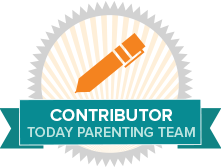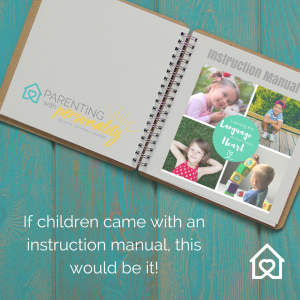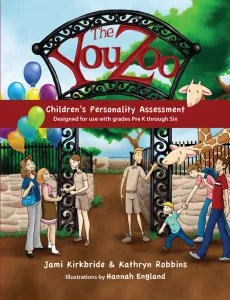Children can experience suicidal ideation for a variety of reasons, including child trauma, anxiety, depression, mood disorders (such as DMDD), mental health issues (such as ADHD), overwhelm due to stress, loss, change, or challenges they face. By understanding suicidal ideation, parents and caregivers can take steps to support and help their child through intense emotions and difficult thoughts. Discovering how to talk about it and when to seek specific help is important in creating a safe and supportive environment for children experiencing suicidal thoughts or ideation.

Child in Crisis
“Please just let me die! Won’t you please just let me kill myself!” The words stung like nothing I’d ever heard before. “It’s just too hard and I can’t keep doing it.” My child begged, sobbed, and pleaded. The storm of emotions in that moment nearly overtook me, yet I knew the importance of conveying a calm, steady strength for him.
In this moment I would have to do my best acting and instead of falling apart, I would calmly assure, “I’ve got you. I will help you.” I fought back a flood of tears as I watched his even deeper and more desperate battle through the darkness. Despite my best efforts, a tear still escaped down my cheek. I remained quiet with a steady grip on him for safety.
Finally I could no longer feel his body filled with tension, and I could see he was starting to regulate. I assured him, “I’m hanging on to you. When you can’t hold on…God holds on to you too. We’ve got you, Buddy.”

Handling Your Child’s Suicidal Thoughts
As a parent, it can be overwhelming and devastating to hear your child say they wish they were dead or want to harm themselves. These are powerful words that can leave you feeling panicked, confused, and unsure what you should do. It is essential to understand that suicidal ideation is a real concern even among children. It is crucial to take any mention of it seriously.
In this article, we will discuss what suicidal ideation is, how to talk to your child about it, and when to seek professional help. Should your child ever communicate that he is thinking of death, dying, self-harm or wishing to be dead, you will feel more clarity in how to navigate this difficult and uncomfortable conversation calmly.
These can be topics that feel mortifying, scary, and impossible to bring up in parent groups, but it’s important to realize that education is the first step to changing what has become a real problem with our children.
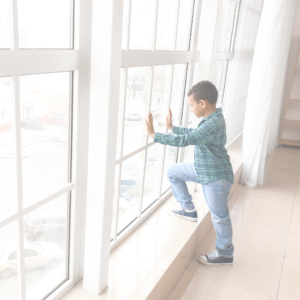
What is Suicidal Ideation?
Suicidal ideation is when someone experiences thoughts and behaviors related to wanting to take their own life, cause harm that could result in death, or suicide. Children can experience suicidal ideation for a variety of reasons, including anxiety, overwhelm, depression, mood disorders, trauma, or other mental health issues. Some may also feel distressed, overwhelmed, or hopeless about stress, loss, change, or challenges they are facing, leading to thoughts of self-harm or death.
It’s important to note that having thoughts of death or suicide does not always mean that a child is at immediate risk to harm themselves. However, it’s imperative that parents take these thoughts or feelings seriously and seek professional help to address them swiftly and calmly.

When A Dysregulated Child Mentions Death
If your child is having a meltdown and expresses thoughts of suicide or wishing they were dead, it’s essential to remain calm and offer comfort. If your child’s blurting out or shouting things like this while dysregulated, it is best to keep your responses minimal, just be compassionate, and present.
Let your child know that you’re there for them, and that you will do everything you can to help them feel safe and supported. You might sit near, ask if they want you to hold or hug them, or rub their back (some may only be triggered further by touch, so asking is important). And you might simply and quietly say, “I can help.” or “I’ll keep you safe.” Or even just “I’m here.”
It’s important that you keep words minimal to avoid auditory overload when they’re already dysregulated. Avoid saying things to minimize or silence their words with things like, “Don’t say that.” “Stop talking like that.” Or “It’s not that bad.” In this moment, it is critical to let your child get things out and handle the next step when they are calm, regulated, and ready to listen and understand.

Statistics of Child Suicide
- Children as young as 5 years old can experience suicidal ideation, but it is usually more common in children aged 10 years and above.
- 95% of child suicides take place in the family home with 65.6% in the child’s bedroom.
- The most common form of child suicide is by hanging with 78% and 18.7% used a firearm.
- In over half, 58.4%, of these suicides, a parent was at home at the time of the child’s death. (National Institute of Mental Health)
- In 2020, suicide was the third leading cause of death among children aged 10-14 years old in the United States. (National Center for Health Statistics)
As these statistics reveal, suicide is a growing and devastating issue that we must discuss, understand, and work to prevent in our children. If you have a child who struggles with suicidal ideation or talks about wanting to die, it is imperative that you take their comments and struggles seriously and respond quickly to have them assessed.
Comments should never be minimized or excused as simply “attention seeking,” as even a child who is seeking attention with these powerful words is hurting a great deal. They fear or believe they won’t be understood without such a serious comment. And that should be concerning to any adult as well.

How to Talk to Your Child About Suicidal Ideation
It is crucial if you want to talk through the thoughts of suicide or death, that you don’t try to do this when the child is emotionally dysregulated, worked up, shouting, or having a meltdown.
As the child becomes more regulated, you can continue with the conversation about their thoughts and feelings. Doing this while the child is emotionally dysregulated will only create further upset or triggering and won’t be beneficial for anyone, parent or child.
For example, you might say, “I see/hear that you are really hurting (angry/sad etc.). Is that what you wish would stop?” Then explain the difference. Express to them that “wishing to be dead means no more parties, no more holidays, no more Christmas, no more fun with friends, no more playing with siblings, no more favorite snacks, no more presents, no more playing sports, no more eating ice cream, no more playing computer, no more making fun memories, and no more of (whatever they really value).”
Explaining the Finality of Suicide
Death means the end of life here, and that they won’t be able to experience the things they love, such as spending time with friends and family, playing the sports and games they enjoy, and making fun memories.
Explain that to them, “Sometimes people say they wish they were dead when what they really want is just for the pain, sadness, fear, hurt, worry, anger, confusion, or overwhelm to stop.” Ask them which of these two options it is for them. Their answer indicates a lot about where they are as it pertains to needing additional help.
When they indicate what they wish would stop, let them know you hear them. And that will work to help that happen. You can assure them that you are there to help and will get help from anyone else that is needed (counselor, coach, doctor, etc.). Validate their feelings, without validating taking unhealthy action because of them. Remind them that nothing is too big to work through together. And clearly communicate, “I am here to help you and keep you safe.”

Validation is Essential
It’s important to validate your child’s feelings (what they are feeling, not suicide as an answer or option) and let them know that you take their words seriously. They need to know that the thoughts or feelings they share about this are powerful…not ones that get them in trouble. They need to know these are thoughts, feelings, and words that you will always pay attention to and respond swiftly and calmly to.
This is where some parents voice frustration or concern that their child is simply manipulating or trying to get attention by talking about this. It’s helpful to remember that whether a child is serious, or just feels that they need to say something of this magnitude to feel heard, seen, or understood…both are equally concerning. Failing to validate their feelings or thoughts can cause the behavior to escalate until they feel you DO take them seriously!
If your child expresses thoughts of death or suicide frequently, you may need to develop a system to monitor their feelings and helps you both understand what steps you will take to seek professional help when necessary. This can build trust as they learn to communicate these difficult things.
“It’s crucial to create a culture of safety and openness where kids feel comfortable discussing their emotions and seeking help when needed.” – Dr. Ross Greene
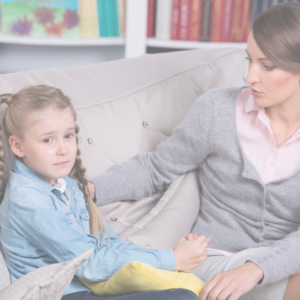
Developing a Rating Scale for Suicidal Ideation
If your child struggles with suicidal ideation, you may find it helpful to develop a strategy that helps you and your child both understand when to act and what action to take. Developing a 10-point scale can help you monitor their feelings, be alert to any changes in frequency or intensity, and help you both determine when to seek professional help.
Here is an example of a 10-point scale for the intensity and frequency of suicidal thoughts:
Level 1-2: Thoughts of death, harming self, or suicide come and go.
You can always share with a parent or safe adult when you remember to.
Level 3-4: Thoughts of death, harm, or suicide stick around for a bit. You need to think about why it’s not a good choice.
Tell a parent or safe adult about it when you get home or sooner if you are able. Set up an appointment with a counselor to have them evaluated if this is a new behavior or struggle. If in doubt just visit the doctor immediately and let them evaluate.
Level 5: Thoughts of death, harm, or suicide are growing, and you aren’t sure if they will stop.
Find an adult right away and let them know you’re having thoughts about self-harm, death, or suicide, and need someone to talk to. Talk to a counselor to set up an appointment as soon as possible. Make sure all objects that could be used for harm are put away, put high out of reach, or even locked up (including scissors, knives, medications, etc.). If in doubt at all, just visit the doctor immediately so they can evaluate the level of danger.
Level 6-7: Thoughts of harming self, death, or suicide feel too big to stop and talking with a parent is not helping it stop.
Call a counselor to talk or see if a child can be seen in the office (many counselors take time for a crisis visit or call and then do a follow up appointment the next day). Counselors usually have a process for urgent calls. Your child shouldn’t be left alone, and safety measures should be taken with any objects/items that could potentially be dangerous, even clothing or bedding. Should have adult supervision nearby. If a child can’t be seen by a counselor that same day to be evaluated, then go directly to the doctor to be evaluated.
Level 8-9: Overwhelming and frequent thoughts of death, dying, and harm that won’t stop even with help or counselor intervention via phone or visit. Child should be evaluated immediately in person by a counselor or doctor.
This is an indication that your child needs immediate medical attention. Do not leave alone or without informed adult supervision. Should be evaluated to see if hospitalization is needed.
Level 10: There is a plan, idea, or means for how harm or death could happen.
Hospitalization likely, if unable to be safe. Medical and mental health professionals will assess what is most appropriate for them at this point.
Proactive Monitoring of Suicidal Thoughts
It’s important to note that every child is different, and you may need to modify the scale based on your child’s unique needs or issues, your personal knowledge or experiences with mental health, your child’s pattern of behavior, impulsivity, or emotional escalation. This is just an example based on what worked with our child when he was 9 and 10 years old. Making this a visual may be helpful for younger children.
Remember, children with executive functioning difficulties as often seen with DMDD or ADHD can react impulsively when the emotions build up quickly or they feel rejection from others. Keep this in mind and exercise great caution.
Having a rating system in place can help you and your child stay on top of their feelings, proactively monitor them intermittently, and get help when needed. It may also help your child understand the steps that may need to be taken if feelings continue to escalate. If you fear your child might not indicate severity of symptoms if they fear hospitalization, you may choose to adjust what details you give. On the flip side…kids need to know and understand that these thoughts are taken seriously and we must keep them safe.
“When we slow down and attune to our child, we create a climate of safety and connection that helps to heal the impact of stress and adversity.”-Mona Delahooke

Ask the Tough Questions
If your child expresses thoughts of death, harm to self, or suicide, it is important that you portray a calm, controlled, and compassionate demeanor. Even if you are panicking, devastated, scared, or even upset on the outside, you need to show them you are strong enough to handle their big or intense emotions and tough discussions.
It’s important that you portray a confidence asking questions that quite honestly, feel overwhelming and scary. It is vital that you ask, “Do you have a plan or idea for how you would harm yourself or die?” This is an important indicator for how quickly you must seek help. Even if your child reports a lower number on the scale, having a plan or idea of what they would do to harm or cause death makes it a 9-10. And they must be taken to receive help immediately.
If you are ever in doubt, or even unsure if their answer is truthful, seek help right away.

When to Seek Professional Help
If your child expresses thoughts of suicide and has a plan or idea for how they might harm themselves, seek professional help immediately. Even if you are unsure if your child has a plan, and they give you an unclear answer, it’s always better to err on the side of caution and seek help.
Other signs that your child may need professional help include:
- Talking about death, harm, or suicide frequently
- Engaging in risky or potentially dangerous behaviors
- Withdrawing from friends and family or things they enjoyed
- Experiencing sudden changes in mood or behavior
- Experiencing a traumatic event or significant life change or loss
Continuing Suicidal Ideation
Some kids struggle with suicidal ideation for years and never have a plan. So, the rating system can be helpful if your child struggles with these thoughts periodically or consistently, and you need a way to monitor if things are changing for the better or worse. If though, your child has never been evaluated by a counselor or doctor concerning these thoughts, start with seeing a counselor or doctor right away.
It’s essential to find a mental health professional who is experienced in working with children and adolescents. You can start by contacting your child’s pediatrician, community counselor, or school counselor for recommendations.

Treatment Options for Suicidal Ideation
Once you have sought professional help, there are several treatment options available for children or adolescents who are struggling with suicidal ideation, thoughts of death or self-harm. The most common treatments include therapy and medication.
- Therapy
Therapy can be an effective way to help children and adolescents learn coping skills, process difficult emotions, create new strategies and approaches to manage big emotions and thoughts, and develop a support system. There are several types of therapy available, including:
Cognitive Behavioral Therapy (CBT): which typically focuses on identifying and changing negative patterns of thinking and behavior.
Dialectical Behavioral Therapy (DBT): which usually teaches children coping skills to manage intense emotions, reduce impulsivity, and learn better regulation through mindfulness and other skills.
Family Therapy: which typically involves the entire family learning ways to improve communication and relationships within the family that may be contributing to overwhelm, stress, and upset.
- Medication
Medication can be an effective way to manage symptoms of ADHD, mood disorders, depression, and anxiety, which can often relate to suicidal ideation. However, it’s essential to work closely with a mental health professional to determine the right medication and dosing for your child’s unique symptoms and needs.
While many parents may have some concerns over using medication, it is important that you don’t just rule it out altogether. Talk with a mental health professional or even a naturopathic doctor that might be able to find some vitamins or supplements that can support your child’s body during the struggle.
Some parents who were initially strongly opposed to medications reached the point that they felt they had no other options to pursue. When medications were tried, they brought relief that had been long-awaited. So do your research, pray for guidance, ask around, and then seek the advice of those who understand the medications commonly used to address issues that can be associated. Make a well-informed decision, not just a decision based on fear.

Supporting Your Child Through Treatment
As a parent, it can be challenging to navigate your child’s mental health struggles, especially when they include such deep things as suicidal, self-harm, or death thoughts. However, it is vital that you learn to understand, communicate, and validate your child’s struggles and support them through treatment. Here are a few ways you can help:
Encourage Good Communication: Let your child know that you are there to support them and encourage them to share their thoughts and feelings with you. Let them know that you would always rather them share their thoughts and feelings than to struggle through them alone. Remind them that they are not in trouble for sharing these thoughts and that you will remain calm and help them.
Be Involved with Therapy Sessions: Attending therapy sessions with your child can help you better understand their treatment plan and learn ways to support them at home. Despite your best efforts, you may need someone from the outside looking in to clue you into things you may be missing. Attending counseling with them can help you get on the same page, use the same terminology, and even develop some shorthand code words for things that may feel too hard to explain when stressed.
Encourage Them to Do Self-Care: Encourage your child to engage in self-care activities, such as exercise, meditation, prayer, or spending time in nature or doing things they enjoy.
Create a Safe and Supportive Environment: Ensure that your home is a safe and supportive environment for your child. Keep things as calm as possible and work to reduce their stress and triggers. Connecting 1:1 with them can be a great way to grow that safety and trust with them.
Prioritize Your Own Self-Care: Taking care of yourself is essential when supporting a child with mental health struggles. Make sure to prioritize your own self-care activities, such as exercise, socializing, prayer, quiet time, and therapy for what you need to work through or have support for learning to understand or manage. And don’t hesitate to enlist the help of a mentor or parent coach to help carry the burden you may feel in this journey.
Supporting your child through treatment for mental health issues can be challenging, but encouraging good and open communication, attending therapy or coaching sessions, and prioritizing self-care can make a significant difference as you navigate these complicated struggles with your child. Remember, seeking professional help in understanding and providing support for your child and his unique needs is crucial in preventing suicidal ideation from becoming a reality for your child and family.

Article At a Glance–
How to Help Your Child with Suicidal Ideation–If your child expresses thoughts of death, self-harm, or suicide, it’s important to take immediate action. Here are some steps you can take:
- Stay calm and supportive through the process.–It’s important to stay calm and supportive when talking to your child about their thoughts of death, harm, or suicide. Let them know that you love them and that you want to help them.
- Ask the tough questions.–Ask your child if they have a plan for suicide or if they have access to any means of harming themselves. If they do, seek immediate medical attention.
- Explain the difference between wanting to die and wanting to stop the pain.–As mentioned earlier, children who express thoughts of suicide may not necessarily want to die. They may simply want to escape the pain they’re feeling. Explain to your child that death is permanent and that there are other ways to stop the pain.
- Seek professional help with the issues.–It’s important to seek professional help for your child if they express thoughts of suicide. This may include seeing a therapist or counselor, or in some cases, seeking emergency medical attention.
- Develop a plan with your child.–If your child experiences frequent thoughts of death, self-harm, or suicide, it may be helpful to develop a plan to monitor their feelings, thoughts, and changes. This could include a 10-point scale, as described earlier, or another method that works for your child.
September is Suicide Prevention Month, but this topic deserves our efforts, attention, and desire for change year round. We need to commit to the mental health of our children. Let’s spread the word, help educate, and help empower those in our child’s life to understand their needs, their struggles, and their desire to live a life where they feel seen, heard, and understood.
Need others to get on the same page? Are you needing help to get other’s in your child’s life on the same page with understanding their mental health issues, unique wiring, intense emotions, or struggles. I’ve got your back.
In fact, I just recently introduced the Behind the Behaviors: What You Need to Know About A Uniquely Wired Child resource. This 14-page resource might be just the tool do that! You will find checklists, cheat sheets, and even a letter to share with extended family, teachers, coaches, etc. You don’t have to walk this path alone. I am here to help! Get your free copy today!
Help the people in your child’s life get a clear understanding of them and their unique wiring! It will make your child’s life easier and yours too!
XXX

Needing some guidance in how to understand your child’s personality, needs, or struggles? I get it! Parenting can feel like a three-ring circus (I’ve often joked a seven-ring circus…with our seven kids! ;) ) when you don’t understand the intricacies of each child and their unique and wonderful qualities and skills.
Want to try a Personality Quiz? Don’t worry you can’t fail! LOL! Interested in taking a quiz to figure out your personality or your child’s personality! Let’s do it! Try out the Parent Personality Quiz to get some insight into your personality. Then hop on over and do the quick and easy Child Personality Quiz to get a glimpse into what your child’s personality could be. This is a great place to start!
Did you know Parenting With Personality has an APP? It’s true! You can download the app from Apple Store or Google Play. There is a free course on there that you might appreciate as your busy summer draws to a close. Five Days to A Refreshed Mom is just the tool to help you refresh, regroup, and refocus for the year ahead! Check it out today! Also on the app, you will find some quick and easy personality courses, some free printable resources…and those quizzes I mentioned above as well! The app is free, so go check it out today!
Not sure where to start? I get that too! Book a call and I would be happy to help you map your course and find resources best suited for your family’s needs.

With expertise, and wisdom gained from raising seven wonderful children, and a background in counseling, Jami, a dedicated parent coach, speaker, and author, offers valuable insights and practical guidance to empower parents on their unique journeys of raising children. Founder of Parenting With Personality and creator of Calm Connection Parent Coaching Program, she equips parents with the tools and strategies they need to foster a better understanding and meaningful connection with their little ones. As a regularly featured guest on ChannelMom Radio, her relatable stories and humorous anecdotes bring laughter and inspiration to listeners, making parenting an enjoyable and fulfilling adventure. Join Jami on this incredible journey and discover a world where connection, laughter, and growth abound, even in a bustling and busy household. Her writing has been featured with MOPS International, CBN.com, and Today Parenting.


